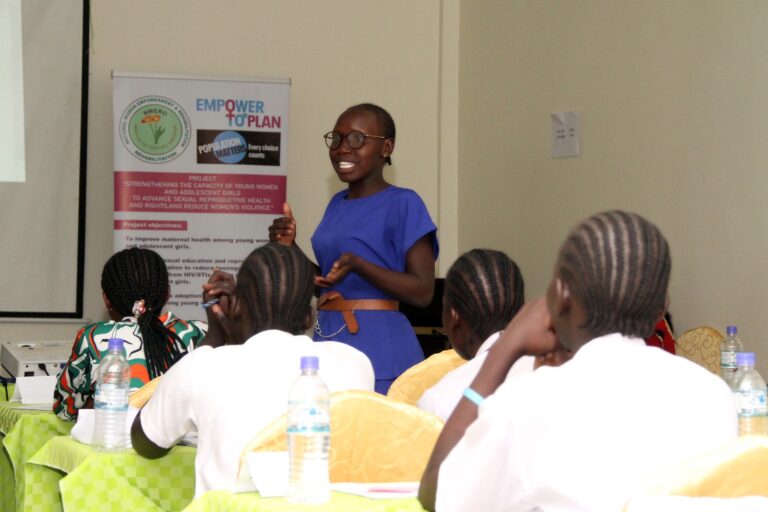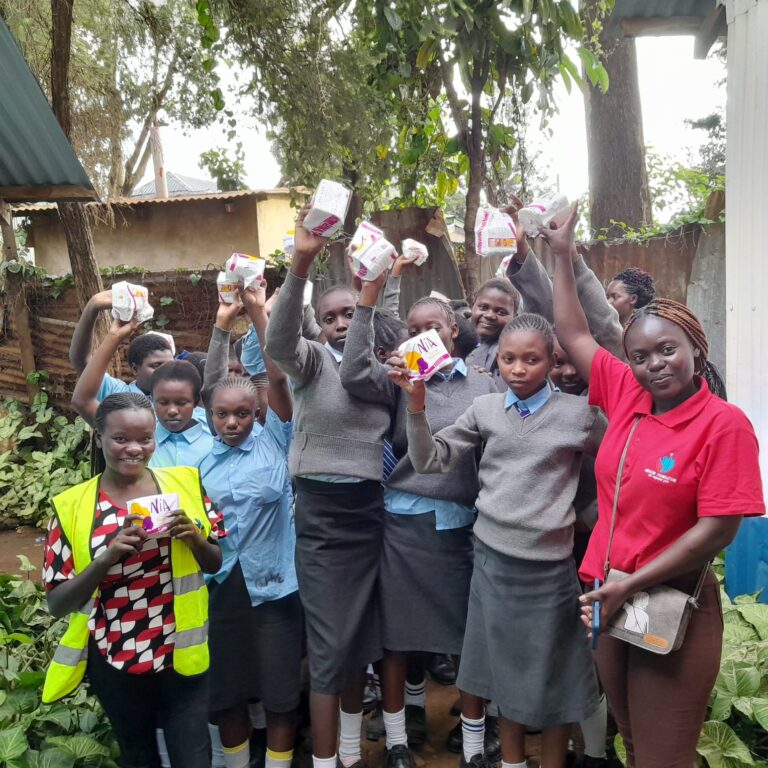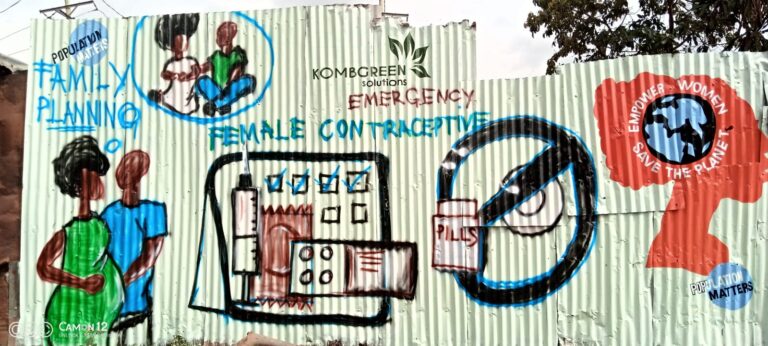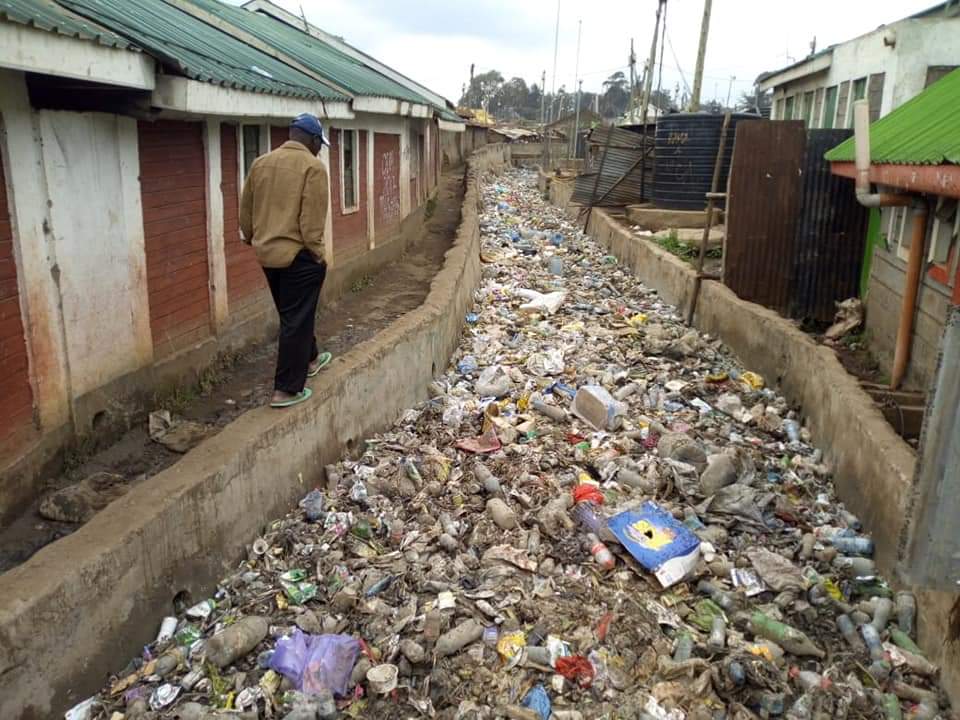
Urbanisation challenges in Kenya’s Nairobi: a tangled web of issues
In Nairobi’s Kibera and Korogocho, high population density brings intricate challenges, compromising access to socio-economic services and heightening insecurity. This blog post delves deeper into the local contexts, where the nexus of population density and accessibility forms the backdrop for multifaceted issues.
Africa is witnessing rapid urbanisation, with urban populations growing at an average rate of 3.44% annually, according to the UN World Cities Report 2022. Nairobi, Kenya’s capital, mirrors this trend, experiencing exponential growth from 290,000 residents in 1960 to an estimated of 5 million in 2023. Over 60% of Nairobi’s population resides in informal settlements, a substantial increase from 33% four decades ago.
This urban explosion necessitates closer scrutiny, especially in densely populated areas like Kibera (Africa’s largest informal settlement) and Korogocho, where interconnected challenges create a complex environment for residents.
THE TRIPLE MENACE: POVERTY, HIGH POPULATION DENSITY, AND SPATIAL CONTRAINTS

The challenges faced by Nairobi’s informal settlements are intricate and multifaceted. They encompass crucial aspects like water, sanitation, and hygiene, environmental concerns, health, education, and employment. Each dimension plays a pivotal role in the intricate web of difficulties experienced by residents in these informal settlements. Kibera and Korogocho, among the most densely populated informal settlements in Nairobi, are no exception.

Zooming in on Kibera and Korogocho reveals intricacies that influence the lives of its residents. Despite the unique characteristics or subtleties present in each of these local contexts, they do not lead to significant changes in the overall situation.
OUR ONGOING WORK IN KIBERA AND KOROGOHO
In partnership with AWOCHE Foundation, we’re taking small yet meaningful steps towards holistic community development in both these areas. The focus is on sexual and reproductive health and rights, instilling life skills and advancing environmental sustainability efforts. To learn more about our collaboration with AWOCHE Foundation and support their efforts, please click here.
Poverty is entrenched in Korogocho, with over 60% of households facing economic hardships. Meanwhile, Kibera faces a dual challenge: half its population is unemployed and the other half engaged in formal employment earns less than $1 a day.
The challenges are compounded by poverty and spatial constraints. In Kibera, a mere 2.5 sq.km. houses over 1 million people, while Korogocho accommodates over 400,000 residents in 1.5 sq.km. This exacerbates difficulties due to a lack of infrastructure and resources for essential services.

CRIME: THE UNFORTUNATE OUTCOME OF UNEMPLOYMENT
High population density, coupled with a lack of social cohesion, fuels rampant crime in Nairobi’s informal settlements. The majority of crimes are driven by the need for subsistence and survival among the unemployed. A striking 61.2% of crimes in these settlements are attributed to high levels of youth unemployment (Security Research and Information Centre).
EDUCATION BARRIERS: A CYCLE OF POVERTY
Education, vital for breaking the cycle of poverty, is severely hampered in these settlements. Despite a concentrated presence of educational facilities, over 90% of these establishments in Kibera fail to meet general space standards for schools, according to UN Habitat. In Korogocho, poverty forces households to make a grim choice between food for the family and education for the children.
This educational deficit perpetuates a cycle of poverty transmitted through generations. Families often resort to pulling children out of school and involving them in income-generating activities, sometimes leading to illegal practices.
SEXUAL AND REPRODUCTIVE HEALTH AND RIGHTS
The healthcare challenges in these settlements encompass limited access to services, high fertility rates, and concerning environmental degradation directly influencing health outcomes. Pollution in the Nairobi River exacerbates the situation, highlighting the detrimental impact on the community’s well-being.
According to the Report of the Nairobi Cross-sectional Slums Survey 2012, the fertility rate in Nairobi slums witnessed a decrease from 4.0 to 3.5 children per woman between 2000 and 2012.

The age at first childbirth saw an increase in 2012 – from 15.4 years among women with no education to 20.9 years among those with at least a secondary education. However, a noteworthy 23% of births in the slums happened shortly after the preceding birth, less than 24 months apart, presenting significant risks to women’s lives in an already challenging environment.
Deficiencies in healthcare services exacerbate challenges related to sexual and reproductive health and rights (SRHR), leading to a heightened prevalence of unintended pregnancies. Although fertility rates have seen a decline, challenges such as early births and limited healthcare access persist.

This is driven by factors such as poverty, sexual violence, lack of accurate knowledge about prevention measures, limited access to contraceptives, restrictive SRHR policies, and lack of policies and programmes.
ENVIRONMENTAL DEGRADATION AND THREATS TO PUBLIC HEALTH
The healthcare challenges in these settlements encompass limited access to services, high fertility rates, and concerning environmental degradation directly influencing health outcomes. Pollution in the Nairobi River exacerbates the situation, highlighting the detrimental impact on the community’s well-being.
Nairobi, distinguished among capital cities near the Great River Valley escarpment, stands as one of the world’s ten highest capitals. The city’s elevated setting is the source of numerous rivers and streams, forming a complex network known as the Nairobi River Basin. Informal settlements, like Korogocho along the Mathari River and Kibera along the Ngong River, flank these watercourses, culminating at Nairobi Dam (Kenyan Geography).
Kibera’s poor drainage and its proximity to the Ngong River poses severe threats, especially the annual risk of flooding, leading to a cascade of issues – disease outbreaks, including cholera and diarrhoea, and loss of life and property. The allure of cheaper rents along water bodies, where flood risk is high, often compels the poorest residents to risk their lives and assets. This vulnerability extends downstream to Nairobi Dam and further downstream to the central business district. Additionally, the organic pollution levels in Kibera, driven by the unchecked disposal of solid and human waste, reach alarming levels akin to raw sewage.

These interconnected challenges extend to unreliable and inaccessible water, sanitation, and hygiene facilities in both Kibera and Korogocho. Insufficient solid waste disposal systems lead residents to resort to haphazard disposal by the roadside, in trenches, or in the environment, leading to a domino effect of issues, such as diarrhoea in children playing near trenches, blockage of drains, and flooding during the rainy season. The disposal of hazardous materials in dumpsites further poses health risks to the community, emitting fumes associated with respiratory infections.
The absence of proper sewerage systems results in the disposal of faecal matter in rivers, posing a heightened risk of infections, especially among children. Inadequate toilet coverage and access in schools and households is associated with increased infections, particularly among girls.
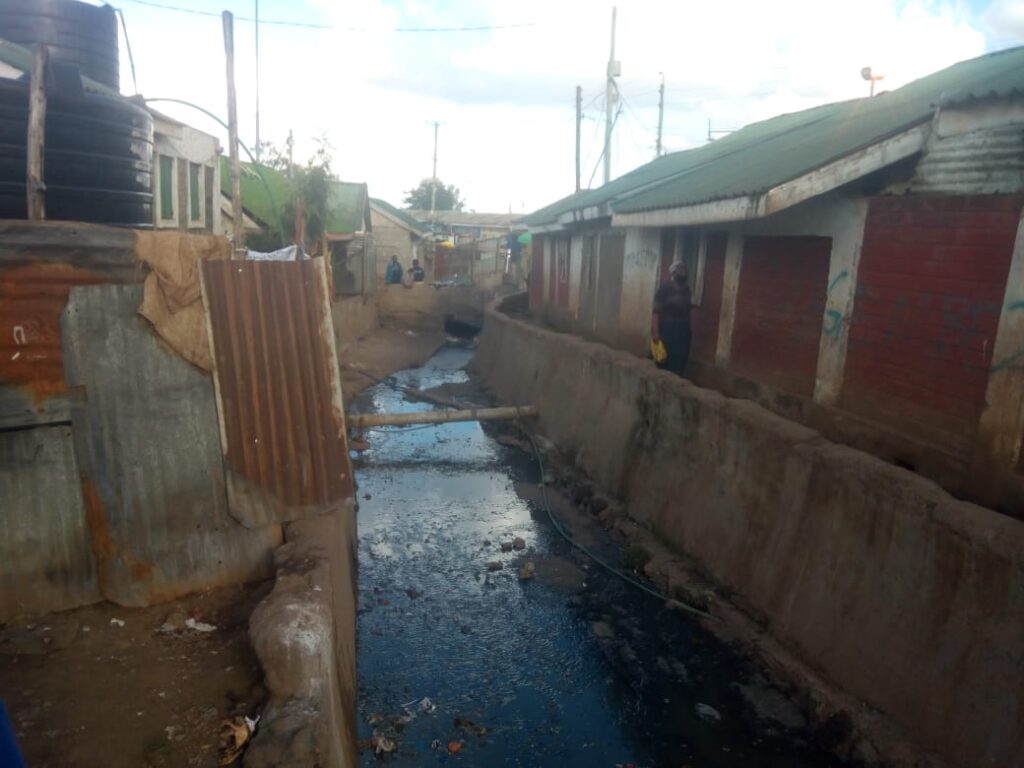
The AfricaNews article underscores the environmental challenges confronting Nairobi, particularly the pollution of the Nairobi River. The unchecked sewage and industrial pollutants in the river emerge as a severe threat, endangering the health of communities along its banks and the whole ecosystem. This contamination raises immediate health risks for residents relying on the river for water and food resources, creating a direct link between environmental degradation and health.

ADDRESSING THE INTERCONNECTED CHALLENGES HOLISTICALLY
Effectively tackling urbanisation challenges demands a holistic approach that goes beyond infrastructure development. Cities, seen as dynamic ecosystems, need thoughtful management of social, economic, and environmental factors. Holistic strategies can reshape urbanisation, prioritising well-being and dignity, fostering resilient and inclusive communities through considerations of social equity, economic well-being, and environmental sustainability.
EMPOWER TO PLAN
Our past Empower to Plan projects in Kibera (Ghettoh Clean Group) and Korogocho (KOMB Green Solutions) focused on WaSH during COVID-19 and environmental sustainability. Now, in partnership with AWOCHE Foundation, we’re taking small yet meaningful steps towards holistic community development in both these areas. These initiatives actively engage communities in understanding the need, and implementing positive change. To learn more about our collaboration with AWOCHE Foundation and support their efforts, please click here.

